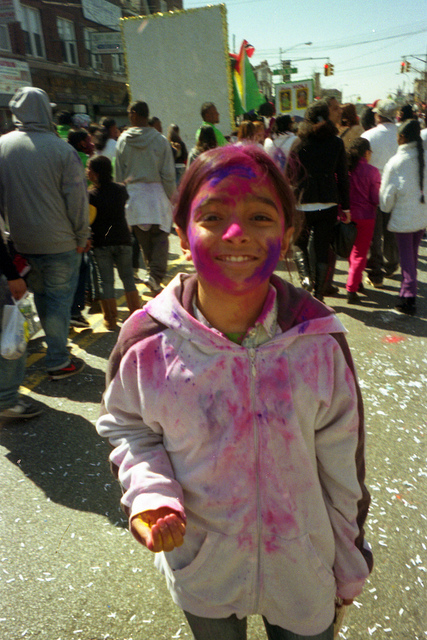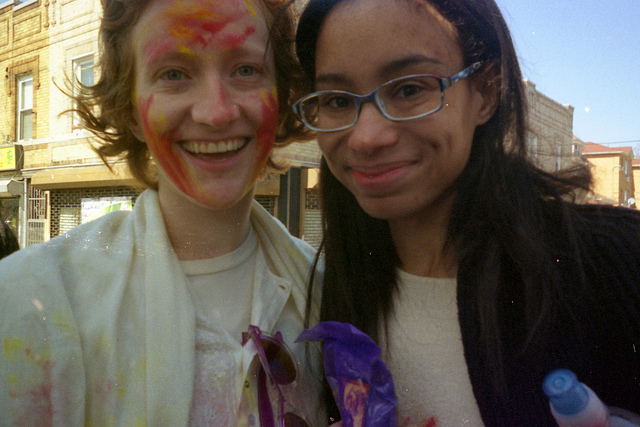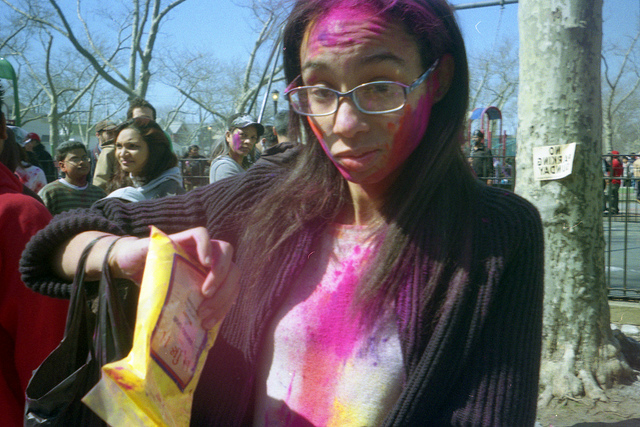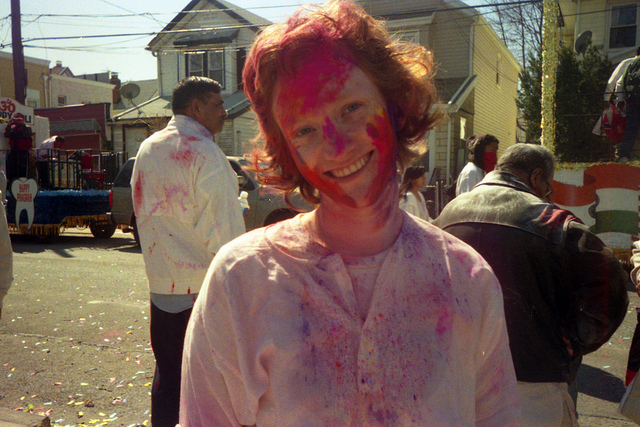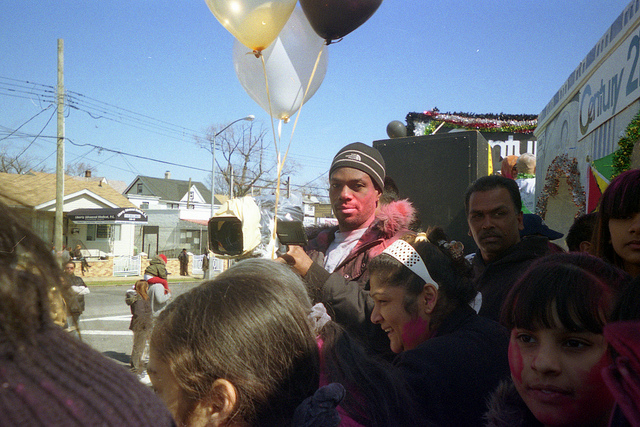 Phagwah Parade, by Taylor K. Long
Phagwah Parade, by Taylor K. Long
By Taylor K. Long
My obsession with India could take up its own essay, its own series of essays, even, but it’s not nearly as complex or compelling as the country itself.
My first exposure to the Hindu holiday of Holi (also known as Phagwa(h), or “Festival of Colors”) came via the Boston Globe’s photojournalism blog The Big Picture. Visions of India always conjure an array of bright colors, but none so much as Holi, in short a celebration welcoming the beginning of spring, where people cover eachother in colored powders and liquid dyes. In New York City, the biggest Holi celebration is the Phagwah Parade, which takes place in Richmond Hill, Queens. Richmond Hill boasts a big South Asian and Caribbean population, as well as the largest Sikh population in the city. My ultimate goal would be to go to Holi in India, but after learning about the Phagwah Parade, it seemed a decent (and less costly) substitute.
Somehow, I found another friend interested in waking up at the crack of dawn on a Sunday. Mita and I took the listed time of 10am rather seriously and, armed with a waterproof disposable camera and garbage bags to cover the car seats, drove out to Richmond Hill (which turned out to be more towards the airport and not remotely near Flushing, as this Brooklyn resident had originally thought). After finding the starting point, it was quickly obvious that punctuality was not in the cards. After buying a few packets of Holi Powder (a reasonable $2-3 dollars for a large pouch), an extra shirt (the powders and dye do stain), and a smoothie from a Jamaican juice bar, we wandered the main stretch of the parade route and were eventually invited to join someone’s float.
As a pale redhead interested in being part of a Hindu celebration, I was unsure how I would be received. It was important to me to show respect and enthusiasm, while making it very clear I wasn’t intending any sort of mockery. Being invited to join the float was an encouraging gesture. Eventually, however, the men who invited us onboard began trying to pick us up for dates, which might not have been so unnerving if they hadn’t been at least 20 years our senior, and if one of them hadn’t introduced us to his kids, while emphasizing, “We’re divorced. They live with their Mom.” We kindly thanked them and told them we wanted to walk for awhile, before jumping off the float to march in the street.
While the floats were mostly local businesses, marching down the street was open to anyone who was moved to. Groups of families, teenagers and the like donned everything from their fanciest, traditional garb to jeans and t-shirts. Indian, Caribbean and African pop music wafted from floats, doorsteps and marching bands, and everyone danced, including staff from businesses that took their break on the sidewalk. Everyone was in high spirits, and not shy about asking us to put Holi Powder on them, or putting it on us. It was strange to have touch boundaries broken, not only in a large city, but also a large American city, where we’ve become so used to a certain amount of personal space, even in public. But here were strange men and women rushing up to us to put powder on our faces and in our hair. “When did you become Hindu?” a man asked me. “Right now!,” I shouted. He tilted his head back and laughed.
The day met its highest points and its lowest at the end of the parade route, Smokey Oval Park, which basically served as an all-out color war. It reminded me of the last day of the year at my private school, where all of us loaded up super soakers and water-balloons and spent the better part of the day ambushing each other. Putting colored powders on perfect strangers brought out a very child-like joy. Most people were polite, sneaking by with a reasonable amount, rubbing it on your face or in your hair with a sweetly-spoken tiding of “Happy Holi” or “Happy Phagwah” and a smile. Others were rude, vengeful or harassing, and therein was the occasional problem. Over the course of the afternoon, liquid dye was sprayed directly in my face, as well as down the front and back of my shirt. Both times, unsurprisingly, by guys (some old enough to know better). The worst came when some guys asked us to be in a picture with them, and one of them started putting his hand down Mita’s shirt. While we had expected to be doused by dye, we didn’t quite expect the sexual harassment, though we possibly should have.
Still, Mita and I walked back to my car feeling mostly positive about the Phagwah Parade – just more mindful that when we return, we should bring more people, preferably including some men to stave off the occasional grope attempt.

